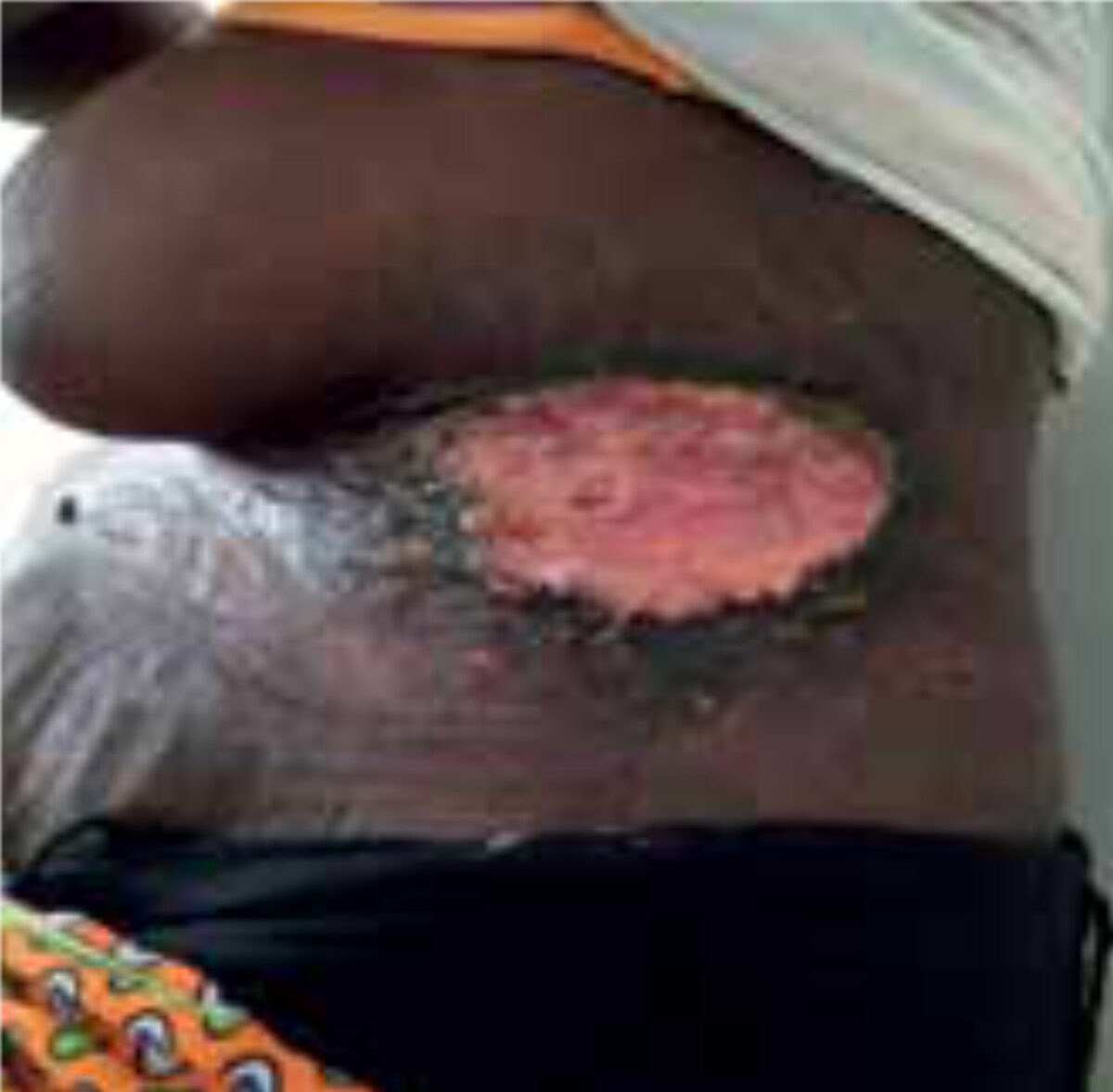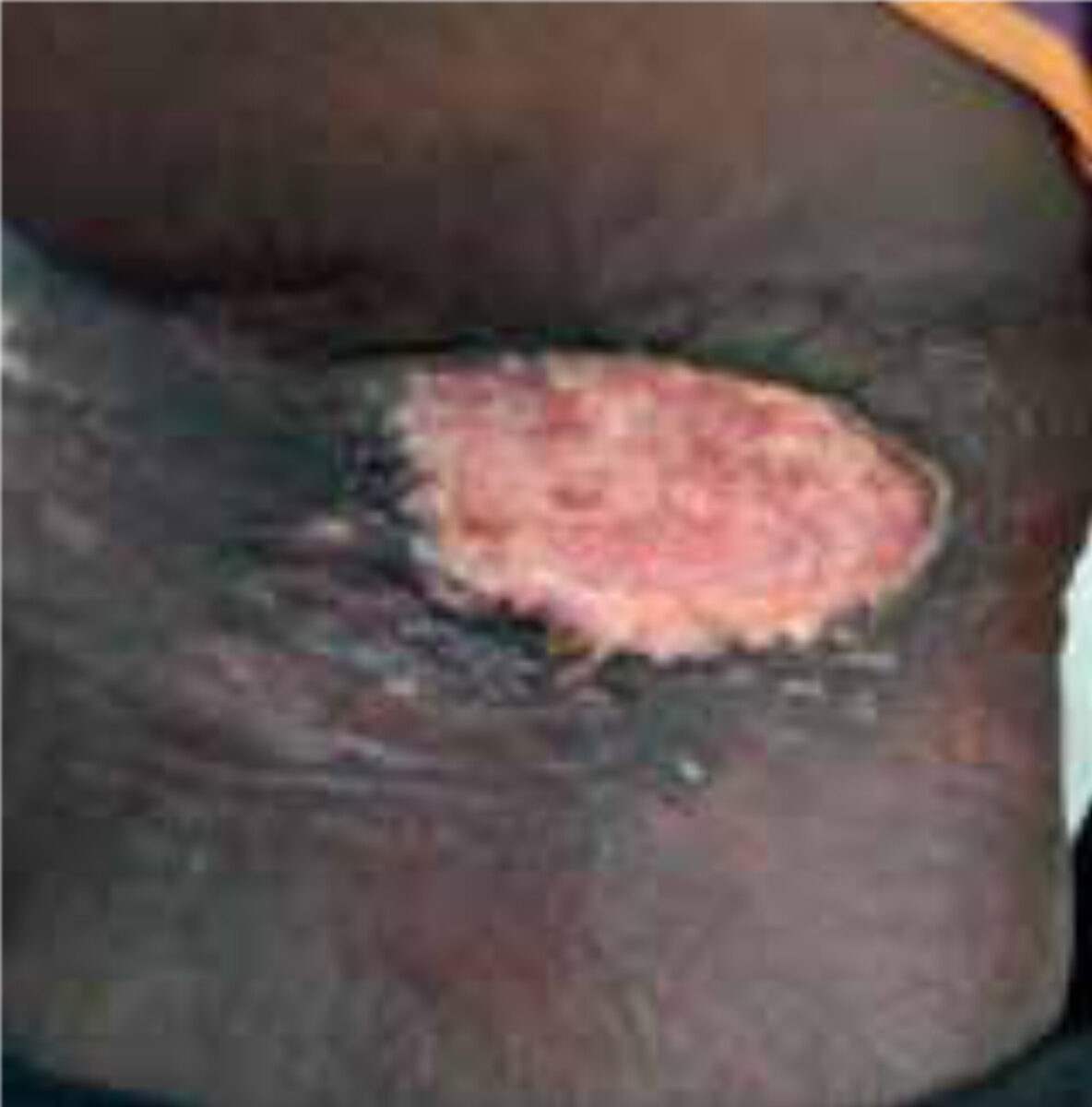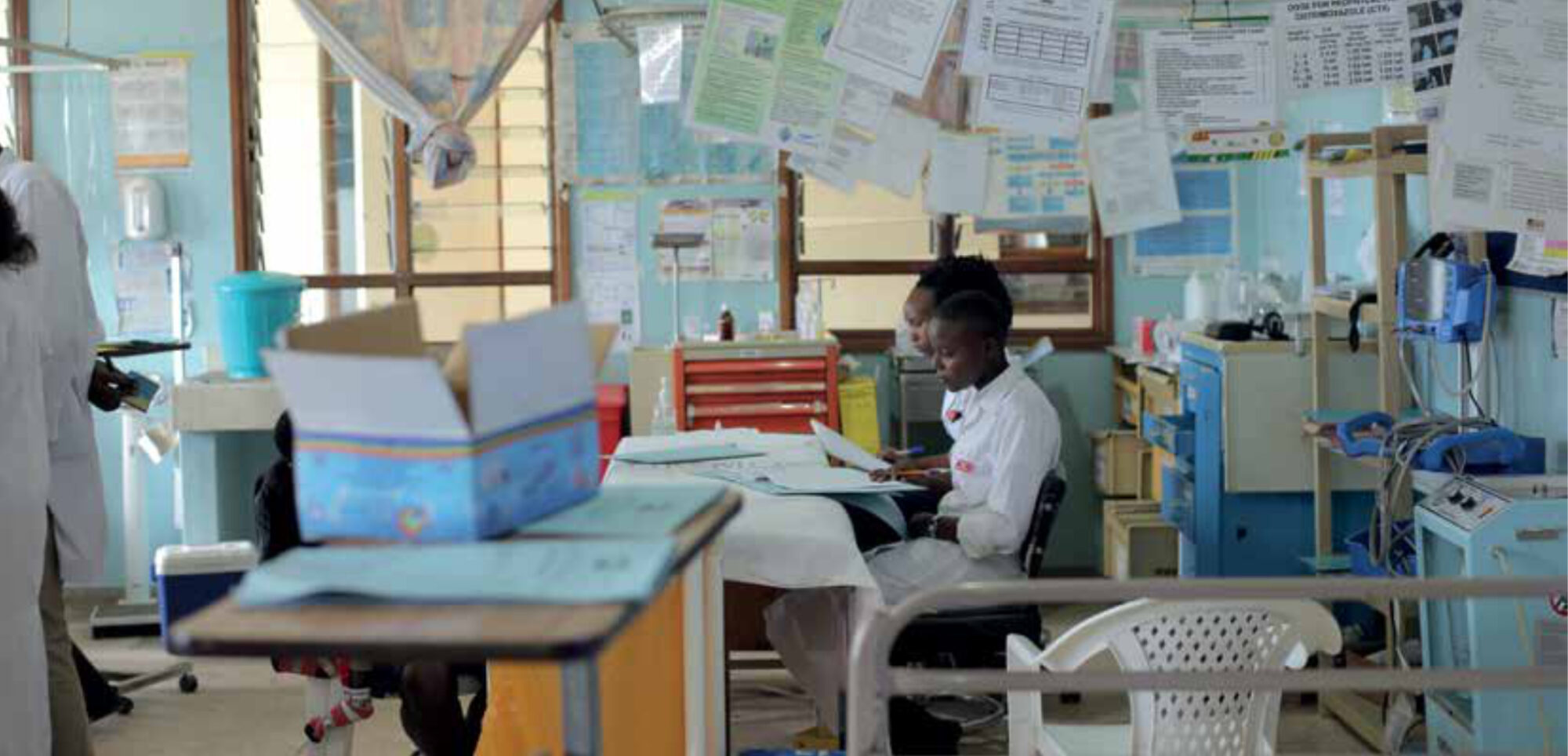Main content
Setting
This case is from Mbuma, a remote village in Zimbabwe. The Mbuma Mission Hospital has a labour ward and general wards, with a capacity of eighty beds, an outpatient department with an opportunistic infections clinic, mother and child care department, environmental health department and home based care department. There is a functional operating theatre, a laboratory with limited capacity, and a well-stocked pharmacy. Currently there is one doctor.
| Case A 41-year old HIV-negative female presented with a sore in an old scar, sustained after large burn wounds on her upper abdomen at the age of four years. The wounds healed per secundam, without grafting. The scar was itching now and then but not painful. Six weeks ago the sore developed, which extended to a large ulcer (see pictures). A biopsy was taken and histology showed a poorly differentiated invasive squamous cell carcinoma (SCC). |


The surgeons of the consult online panel were asked for the best treatment, specifically to advise on the margins to be observed if excision of the ulcer would be considered and if grafting of the wound would be possible in the same session. Advice on the need for chemotherapy was also solicited.
Specialist advice
The diagnosis Marjolin’s ulcer was proposed by the consult online panel. Excision of the tumour with one centimetre margin in all fields was advised, with the explanation that excision with a wider margin is better than a too small margin to minimise the risk of recurrence of the tumour. A split skin graft at the donor site was advised. It was also suggested to check for metastases by examining both the inguinal and axillar lymph nodes and by performing a chest X-ray. A surgeon with expertise in burning wounds provided the Dutch guidelines on SCC of the skin. [1]
Marjolin’s ulcer
A SCC of the skin is the most common type of skin cancer in the world, and the incidence is still growing. It is well known that the risk of developing a SCC is higher in fair skin types, with the most important cause being the exposure to direct ultra-violet light. However, it can also occur in chronic wounds, burn wounds, scars, sores or fistula. If the SCC develops in an old wound or scar it is called a Marjolin’s ulcer, named after the French surgeon Jean Nicholas Marjolin. He was the first to describe transformations of the skin in burn scars in 1828. Two hundred years later, several reviews have been published on this malignant degeneration. [2,3]
A Marjolin’s ulcer is most often a squamous cell tumour but can also be a basal cell carcinoma or a melanoma. It typically develops at least thirty years after the primary condition, although exceptionally it may occur earlier. The lower extremity is the most common localisation of the ulcer. Old burn scars are the main cause (65% of the ulcers[3]), with approximately 2% of them undergoing malignant transformation. [2] Other causes are osteomyelitic fistulae and development secondary to ulcers due to venous insufficiency or pressure ulcers. It is more common in men than in women, with a higher prevalence in low- and middle income countries. The Marjolin’s ulcer is an aggressive cancer, and may lead in a minority of cases to lymph node metastasis and even distant metastasis. The prognosis depends on the differentiation of the tumour, with well-differentiated lesion being less aggressive. The overall 3-year survival rate is 65%-75%, compared to 35%-50% for those with metastasis to the lymph nodes. [2] Treatment options are excision or amputation, and adjuvant radiation or chemotherapy can be discussed. In case of clean wound margins following a wide excision, there is no difference in recurrence compared to amputation. [2]
The exact pathophysiology of a Marjolin’s ulcer is unknown, but it is plausible that multiple mechanisms play a role. While chronic irritation and underlying immunodeficiency may be risk factors for malignant transformation, it is thought that the relative avascularity and lymphatic obstruction of the scar tissue slows down growth and metastasis. When metastasis occurs, the spread is generally quite rapid with an incidence of 95% within one year after diagnosis. [2]
Follow-up
Most likely due to the travel restrictions under the Covid-19 lock down, the patient was lost to follow-up before treatment could be initiated.
References
- Krekels GAM, Van Berlo CLH, Chung YY, et al. Plaveiselcelcarcinoom van de huid: richtlijn 2018 [Internet]. Utrecht: Nederlandse Vereniging voor Dermatologie en Venereologie; 2018. Available from: https://www.nvpc.nl/uploads/stand/66180921-Herziening-richtlijn-Plaveiselcelcarcinoom-van-de-huid-2018_Definitieve-versie.pdf
- Pekarek B, Buck S, Osher L. A comprehensive review on Marjolin’s ulcers: diagnosis and treatment. J Am Col Certif Wound Spec. 2011 Sep;3(3):60-4. DOI: 10.1016/j.jcws.2012.04.001
- Abdi MA, Yan M, Hanna TP. Systematic review of modern case series of squamous cell cancer arising in a chronic ulcer (Marjolin’s ulcer) of the skin. JCO Glob Oncol. 2020 Jun;6:809-18. DOI: 10.1200/GO.20.00094

















































